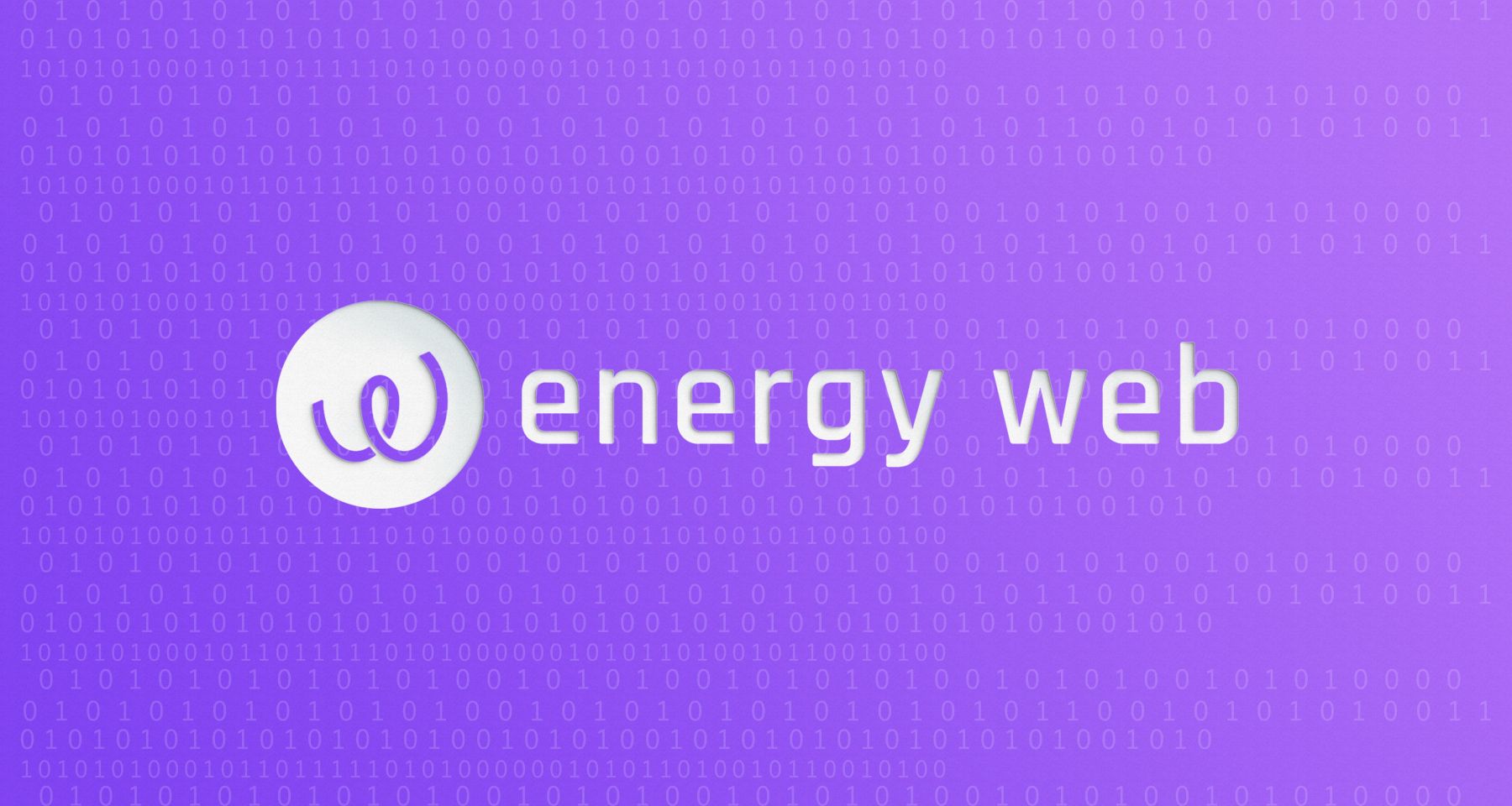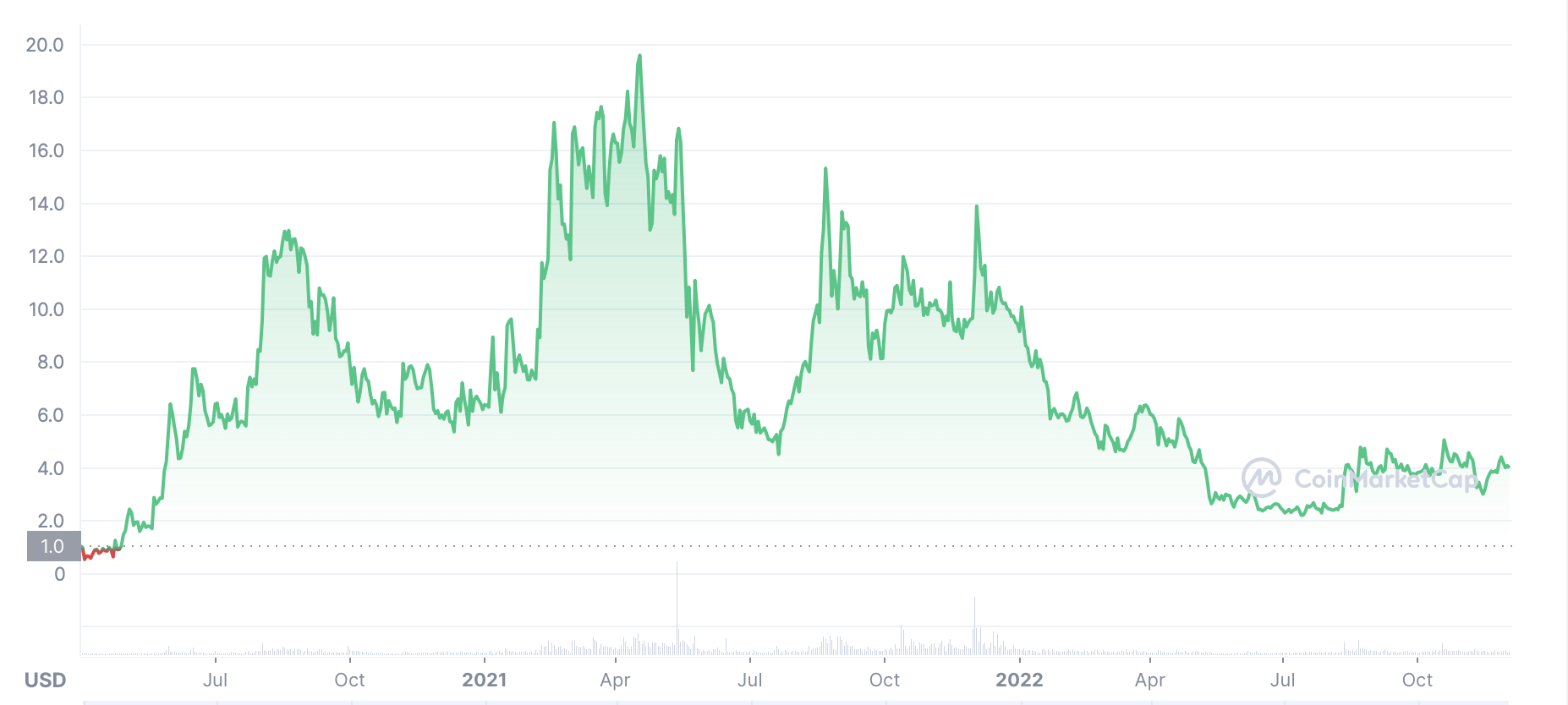Energy web token price prediction: What is energy web token (EWT)?
Can EWT help create a greener future online?
Environmental, social and governance (ESG) factors are increasingly being prioritised by investors, and the world of cryptocurrency is no exception. Energy Web is a crypto project that hopes to be at the forefront of decarbonising the economy, with a blockchain that aims to give developers a platform to design software which pushes clean energy and sustainability.
But what is energy web token (EWT)? How does energy web token work? Let's take a look and see what we can find out, and also examine some of the energy web token price predictions that were being made as of 2 December 2022.
Energy web token explained
With decarbonisation on many companies’ and governments’ radar, Energy Web, which was launched in 2017 by Colorado-based clean energy firm Rocky Mountain Institute and the blockchain developer Grid Singularity, is looking to accelerate the process of achieving a green economy.
The non-profit enterprise is utilising blockchain technology to reach this goal. Developers and organisations can take advantage of its products to implement green solutions. Its whitepaper says:
Its blockchain contains three different layers. The trust section is inspired by the Ethereum network and contains the basic smart contract functionality. Its utility layer is then designed for shared protocols. This has a focus on communication, identity and information exchange. Finally, the third layer contains the software development kits (SDKs) and application capabilities that are essential for developers.
Some 50 different projects are taking advantage of this technology, at the time of writing. For example, EW Zero is an open-source platform that aims to make it easier to purchase renewable energy and carbon offsets. This can be done from its digital interface, which has a focus on transparency.
Jesse Morris is currently Energy Web’s chief executive. Based in San Francisco, he has a background in electricity and science. Previously, he was working as principal in the electricity practice of the Rocky Mountain Institute.
All about EWT
Energy web token (EWT) is the utility cryptocurrency that powers the blockchain. It was designed with the same goal in mind: To create applications in the clean energy sector.
The token currently has two main uses. It is used to pay gas fees on the network for every transaction. This tax is then sent to reward validators for processing these transactions on the blockchain.
EWT is also used as a payment source to finance the decentralised applications (dApps) on the Energy Web blockchain.
One note on terminology. Although the cryptocurrency is called the energy web token, because it is based on its own blockchain, it is also a coin. However, we will call it energy web token (EWT) because that is its name – and because phrases like “energy web token coin price prediction” sound like something that might come from someone who couldn’t speak English as well as they thought.
Energy web token price history

Source: CoinMarketCap
Let's now cast our eyes over the EWT price history. While past performance should never be taken as an indicator of future results, knowing what the coin has done in the past can help give us some important context when it comes to either interpreting an energy web token price prediction or making one of our own.
Energy web token launched at $1.05 on 30 March 2020 and has seen a fairly volatile price history so far. After being listed on the KuCoin exchange on 17 July, it broke into a bullish trend and climbed to a peak of $13.61 on 18 August 2020.
A crash back down to $5 followed in December, after which the token started surging again in early 2021. It received a €1m grant from Google (GOOG) as part of the technology giant’s ‘Impact Challenge on Climate’ programme. The token then reached its all-time high of $22.22 on 17 April 2021.
EWT surged again in December that year as it was leading up to implementing a staking feature for its holders. But the token was only able to muster a peak of $15.24 on 3 December 2021.
Energy Web then fell victim to the crypto market crash and the token plummeted to a low of $2.16 on 18 June 2022.
It gained slightly after that when the project was recognised by BlackRock for its applications which bring transparency to the sustainability factors of bitcoin mining, and it reached a high of $5.15 on 21 August 2022. There was a bit of a downturn after that, and the slump became a crash when the collapse of the FTX (FTT) exchange into bankruptcy saw EWT fall from $4.70 on 4 November to a low of $2.95 on 14 November 2022.
The news that Energy Web was to partner with ecological non-profit RMI to build a registry of sustainable aviation fuel helped boost the price to $4.64 on 27 November but since then things have cooled somewhat and, as of 2 December 2022, EWT was worth about $4.
At that time, there were 30,062,138 EWT in circulation out of a total supply of 48,638,535.
Energy web token price prediction round-up
With that all said and done, let's take a look at some of the energy web token price predictions that were being made as of 2 December 2022.
DigitalCoinPrice said it expected the coin to climb to $4.82 this year. Its forecast expected this gradual increase to continue, and its energy web token price prediction for 2025 averaged out at $17.43. The site suggested the token might reach a new high of $78.73 in 2031.
PricePrediction made an EWT price prediction that expected an average price of $4.20 in 2022. The site’s EWT coin price prediction suggested the token could reach about $13.27 in 2025 and it gave an energy web token price prediction for 2030 of $88.47.
CaptainAltcoin was much more bearish in its energy web token crypto price prediction, suggesting it could drop to $2.49 in February next year before recovering to trade at $8.37 in 2025. In five years’ time, though, it predicted that the cryptocurrency would have become worthless, and remain a de facto dead coin until at least 2040.
Finally, Wallet Investor was also very negative in terms of its energy web token price prediction for 2023. The site said that it thought EWT was in for a tough year, with the coin expected to fall to just under $0.59 in 12 months’ time.
When considering an EWT coin price prediction, it is important to keep in mind that cryptocurrency markets remain extremely volatile, making it difficult to accurately predict what a coin or token’s price will be in a few hours, and even harder to give long-term estimates. As such, analysts and algorithm-based forecasters can and do get their predictions wrong.
If you are considering investing in cryptocurrency tokens, we recommend that you always do your own research. Look at the latest market trends, news, technical and fundamental analysis, and expert opinion before making any investment decision. Keep in mind that past performance is no guarantee of future returns. Never trade with money that you cannot afford to lose.
FAQs
Is energy web token a good investment?
It is hard to say. A lot will depend on how the overall crypto market behaves going forward. In volatile cryptocurrency markets, it is important to do your own research on a coin or token to determine if it is a good fit for your investment portfolio.
Whether energy web token (EWT) is a suitable investment for you depends on your risk tolerance and how much you intend to invest, among other factors. Keep in mind that past performance is no guarantee of future returns. Never invest money that you cannot afford to lose.
Will energy web token go up or down?
While some forecasters, such as DigitalCoinPrice, were predicting a steady rise for EWT as of 2 December 2022, others including CaptainAltcoin suggested it could become a worthless asset. It is important to remember that price predictions often turn out to be wrong, and that prices can, and do, go down as well as up.
In volatile cryptocurrency markets, it is important to do your own research on a coin or token to determine if it is a good fit for your investment portfolio. Whether EWT is a suitable investment for you depends on your risk tolerance and how much you intend to invest, among other factors.
Keep in mind that past performance is no guarantee of future returns, and never invest money that you cannot afford to lose.
Should I invest in energy web token?
Before you decide whether or not to invest in energy web token, you will have to do your own research, not only on EWT, but on other environmental coins and tokens.
Ultimately, though, this is a question that you will have to answer for yourself. Before you do so, however, you will need to conduct your own research. Never invest more money than you can afford to lose, because prices can go down as well as up.